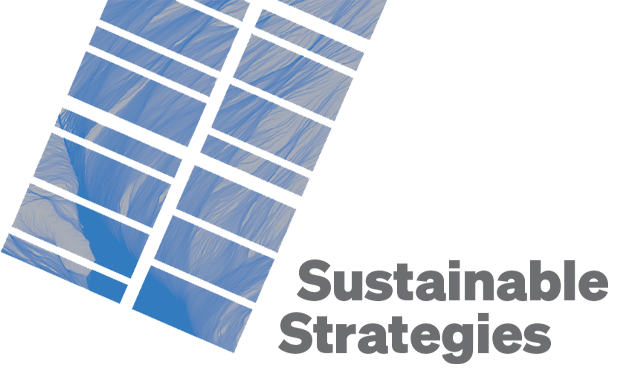We need to innovate our way out of an outdated “risk loop”
Buildings present significant risks to human health and wellness. But instead of finding innovative ways to manage these risks, we stall sustainable innovation by convincing ourselves that innovation is the source of the risk, when in reality, innovation is the only solution.
Let’s break this down.
We know that the built environment — buildings and all the related structures that connect and support them — is one of the largest contributors to climate change emissions. The way we build and operate buildings has, and continues to, cause our climate to change in significant and disproportionate ways.
We also know that we spend a significant amount of time within buildings— on average, humans in North America spend 90% of their time indoors. This percentage will go up as we increasingly seek shelter from the harsher conditions and more powerful storms that are associated with a changing climate.
Running in the background is the fact that there is a steadily increasing volume of research to support the numerous risks that our indoor environments present to our health and wellness. For example, studies show that levels of common pollutants can be two to five times higher indoors than outdoors.
I visualize this toxic, cyclical relationship like this:
We seek shelter from climate impacts in spaces that negatively impact our health; yet these spaces also cause climate impacts, by releasing a significant amount of climate change emissions (GHG).
We seek shelter from climate impacts in spaces that negatively impact our health; yet these spaces also cause climate impacts, by releasing a significant amount of climate change emissions (GHG).
There is a simple strategy to manage this cyclical risk—recognize it for what it is and prioritize building and developing more sustainably, at scale.
And we can do this — we have proven that we can build highly sustainable, even regenerative projects, that also support human health and wellness — we simply choose not to. And the risk inherent in that choice is much too high. This failure to take action, when we know that we can, and in light of the well-documented impacts, would be unacceptable in virtually any other context.
If you start to think about these types of risks in a more holistic way, you start to reframe your thinking and (correctly) see virtually any sustainability strategy as a risk management strategy.
So what do we do?
To break out of this “risk loop” we first need to recognize our own confirmation bias towards the assumption that sustainable buildings are somehow “riskier.” This just isn’t true: whereas innovative, sustainable technologies and strategies can sometimes lack clear precedent, when balanced against the well-documented risks of a rapidly changing climate, the balance tips towards innovation. And as the body research that solidifies the negative impacts “traditional” buildings have on health and wellness continues to grow, the risk of maintaining the status quo — excessively high indoor pollutant levels as just one example — is outweighed by the benefits of innovation.
I visualize this tipping of the scales like this:
To support this work, we also need to reframe the way we think about risk to more appropriately account for broader risks like a rapidly changing climate, so we can develop innovative strategies to manage these broader risks. For example, climate change subjects all buildings — from large commercial properties to single family homes — to many of the same risks, albeit at different scales. Given the built environment’s significant contributions to climate change emissions, working to reduce these emissions, even at the individual building level, is in any property owner’s best (self-serving) interest. It is also in the best interest of any entity in the development, design and construction industries, as well as the manufacturers, suppliers and service providers (from leasing agents to janitorial crews) that support these industries.
In this new type of framework, private and public entities will need to design, fund and deliver strategies that improve sustainable aspects of their buildings and that benefit the overall collective. Yes, some of these benefits will flow to others because all of us are impacted by the same climate. This type of community-level thinking is not the way that businesses usually operate and it is not the way that risk management strategies generally frame things — but those old strategies no longer work.
I think about it like this:
In this new paradigm, some of the up front “costs,” a term that also needs to be redefined, flow to other entities, as climate does not respect property lines or jurisdictional boundaries.
In this new paradigm, some of the up front “costs,” a term that also needs to be redefined, flow to other entities, as climate does not respect property lines or jurisdictional boundaries.
This is a longer-term, wider-spread risk management strategy — but it better aligns with longer-term, wider-spread risks, like the impacts of a changing climate.
Think about it this way; we have been doing the opposite for a very long time, capturing the benefit of the common resource of a livable climate, for free. We need to flip this old paradigm on its head. New tools and risk frameworks are needed to do this work, and in later posts, we will describe two: the Cost of Inaction and the Cost of Catching Up. These costs (risks) have not been traditionally accounted for, but are now a necessary part of our modern world and risk analyses.



